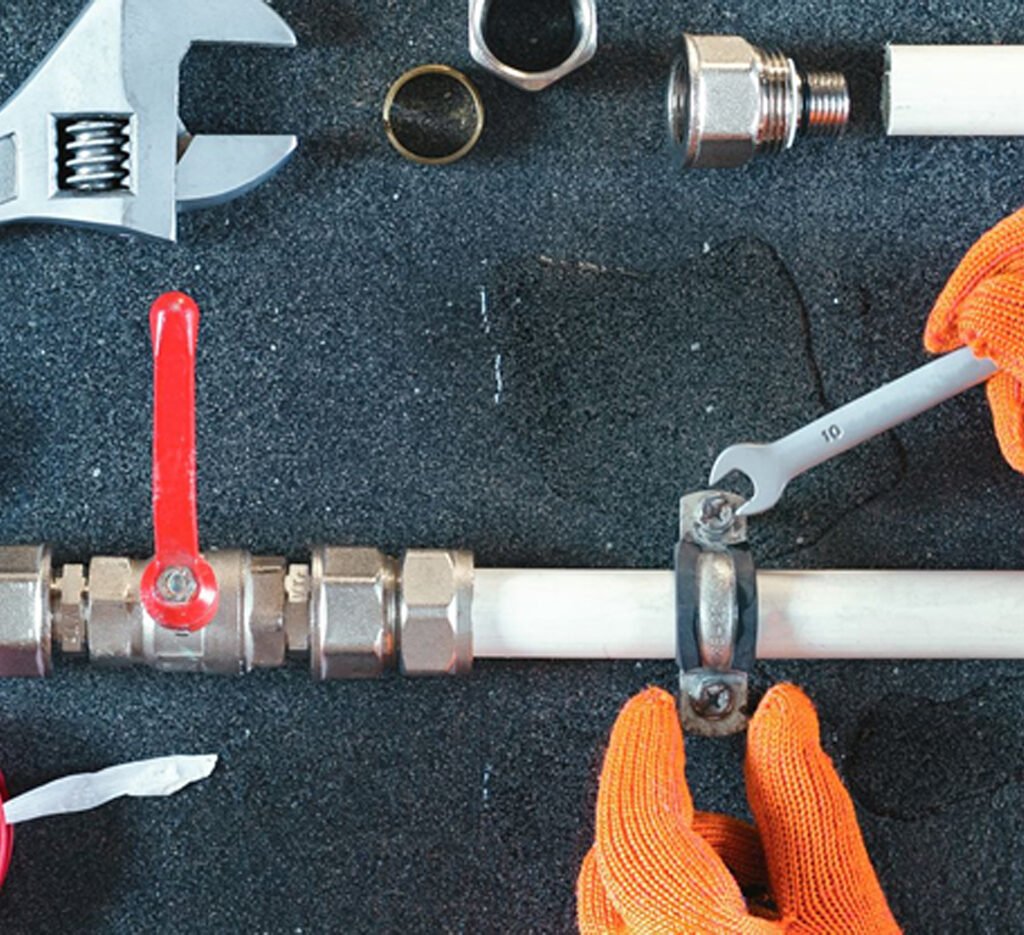1. Fiberglass Resin Tape or Cloth
If you’re looking for a temporary repair for a leaking PVC pipe, fiberglass resin tape can slow the damage. The fiberglass tape makes repair simple by using a water-activated resin that hardens around the pipe and slows the leaking. Before applying the tape to the PVC pipe, clean the damaged area of the pipe using a damp rag. While still wet, wrap the tape around the damaged area and let the resin harden for 15 minutes.
Fiberglass resin cloth can be used for a more permanent repair. Similar to the resin tape repair, start by cleaning the area around the leak or damage, then lightly sand the surface to create a more adhesive surface. The resin cloth can then be placed over the damage. To start curing the resin, shine a UV light directly onto the pipe or take the section of the pipe outside into direct sunlight.
2. Epoxy
Repair epoxy is putty or viscous liquid that can be used to repair pipe leaks on PVC and its joints. To repair your pipe or joint using epoxy, first clean and dry the damaged area, ensuring water can’t reach the affected area.
If necessary, mix the putty or liquid according to the manufacturer’s directions. Then, apply the epoxy and let it cure for ten minutes. After curing, let water move through the pipe and check for any leaks.
3. Rubber and Silicone Repair Tape
If you’re dealing with a minor leak, rubber and silicone repair tape is a simple solution. Like fiberglass resin tape, rubber and silicone tape come in a roll that can be wrapped directly around the PVC pipe. However, instead of adhering to the pipe, the repair tape adheres directly to itself.
To fix the damage, wrap the tape around the leak, covering a little bit to the left and right of the affected area. The tape uses compression to fix the leak, so ensure that the wrap is tight and secure before using the pipes again.
4. Rubber Tape and Hose Clamps
Like the rubber and silicone repair tape, this repair method uses compression to repair small leaks in PVC pipes. Wrap rubber around the damaged area, then separate the hose clamps and place them around the affected area, tightening to stop or slow the leak. This repair should be a temporary fix, as the rubber tape and hose clamps will become ineffective as the leak grows.
5. Replacement
Sometimes, a PVC pipe is too damaged for a simple repair. If this is the case, you’ll need to replace the damaged section with a new PVC pipe. To replace the pipe, first make sure the water to the pipe is turned off. This can be done by using a local water shutoff switch, located near the pipe, or by turning off the water at the main water supply.
Reference:
